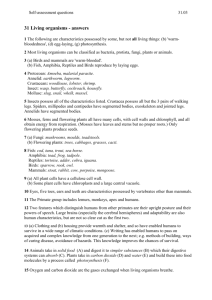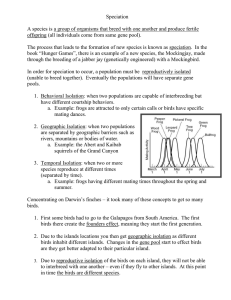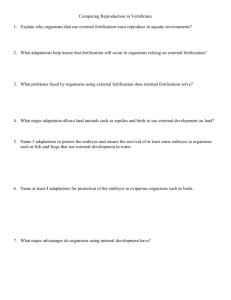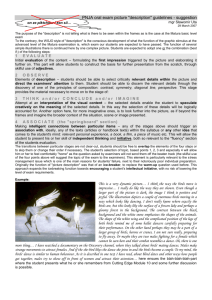Chapter 14 Answer Key
advertisement
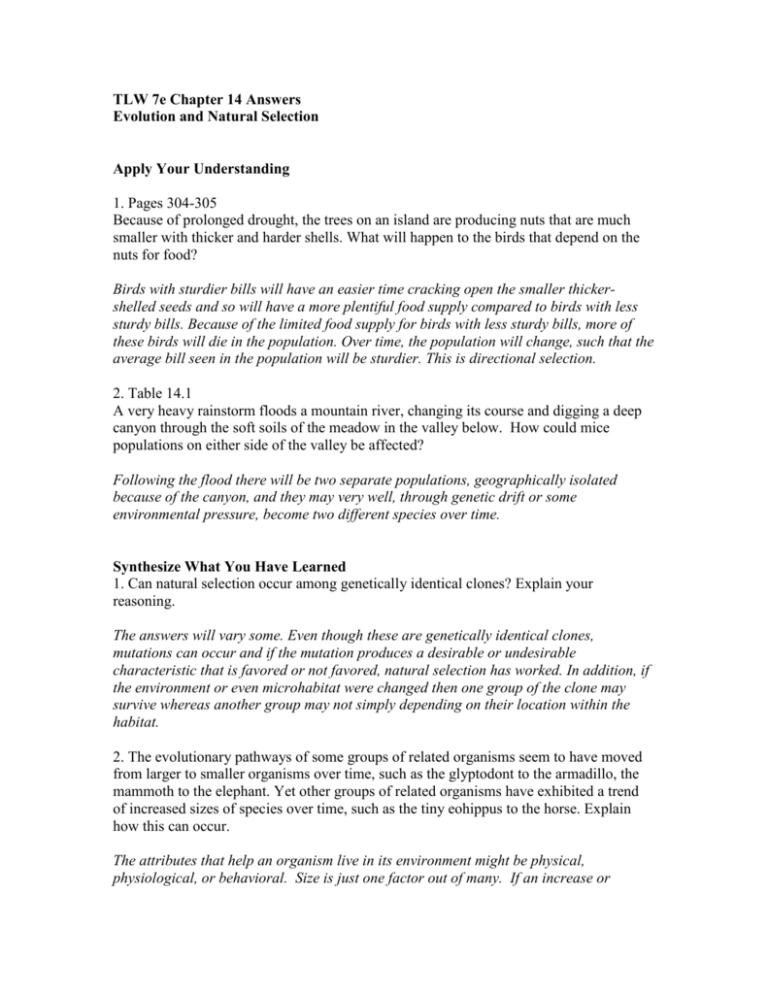
TLW 7e Chapter 14 Answers Evolution and Natural Selection Apply Your Understanding 1. Pages 304-305 Because of prolonged drought, the trees on an island are producing nuts that are much smaller with thicker and harder shells. What will happen to the birds that depend on the nuts for food? Birds with sturdier bills will have an easier time cracking open the smaller thickershelled seeds and so will have a more plentiful food supply compared to birds with less sturdy bills. Because of the limited food supply for birds with less sturdy bills, more of these birds will die in the population. Over time, the population will change, such that the average bill seen in the population will be sturdier. This is directional selection. 2. Table 14.1 A very heavy rainstorm floods a mountain river, changing its course and digging a deep canyon through the soft soils of the meadow in the valley below. How could mice populations on either side of the valley be affected? Following the flood there will be two separate populations, geographically isolated because of the canyon, and they may very well, through genetic drift or some environmental pressure, become two different species over time. Synthesize What You Have Learned 1. Can natural selection occur among genetically identical clones? Explain your reasoning. The answers will vary some. Even though these are genetically identical clones, mutations can occur and if the mutation produces a desirable or undesirable characteristic that is favored or not favored, natural selection has worked. In addition, if the environment or even microhabitat were changed then one group of the clone may survive whereas another group may not simply depending on their location within the habitat. 2. The evolutionary pathways of some groups of related organisms seem to have moved from larger to smaller organisms over time, such as the glyptodont to the armadillo, the mammoth to the elephant. Yet other groups of related organisms have exhibited a trend of increased sizes of species over time, such as the tiny eohippus to the horse. Explain how this can occur. The attributes that help an organism live in its environment might be physical, physiological, or behavioral. Size is just one factor out of many. If an increase or decrease in size helps an organism do better in its environment than other members of its species, then it is more likely to survive and produce offspring like itself. For some species, a larger size was an advantage and so future generations became larger, but for others a smaller size might have been more beneficial. 3. In a courtroom in 2005, biologist Ken Miller criticized the claims of intelligent design. After noting that 99.9% of the organisms that have ever lived on earth are now extinct, he said that “an intelligent designer who designed things, 99.9% of which didn’t last, certainly wouldn’t be very intelligent.” Evaluate Miller’s criticisms. While this is most certainly an opinion question with no one correct answer, one must take into account reasons why 99.9% of things didn’t last, including climatic changes, natural disasters, and results of human impact.


